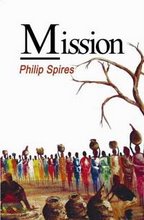This was a concert
of two very unequal halves, at least in length, let alone style. The two parts
were equal when it came to their standard of performance, however. A program
that pits Gershwin against Shostakovich, especially in the latter’s most bleak
form, is always going to present a contrast, and a both delightful and
thoughtful contrast it proved to be.
Now I admit that I am biased. I first heard Shostakovich’s Eighth Symphony in London under Kiril Kondrashin in the early 1970s and the work has stayed firmly in my listening habits ever since. It is not, however, a work to which I listen regularly, maybe once a month at most, because it remains a harrowing experience, no matter how familiar one becomes with its argument.
Shostakovich’s three war symphonies deal with conflict in number seven, victory, albeit hollow, in number nine and raw suffering in number eight. Such subject matter makes number seven, paradoxically, the most accessible of the three with its self-delusion of an apparently triumphal ending. Number nine is so hollowly cynical that it becomes a talking point rather than a musical experience. Number eight, on the other hand, is visceral in its content and thus disturbing in concert. But, from time to time, it is good to be disturbed, to be reminded of the consequence of certain kinds of human behaviour. The fact that it is human behaviour is obvious, by the way, since other life forms do not make bombs.
The concert’s first half offered contrast with the anticipated suffering that was to follow. It was a performance of Gershwin’s Piano Concerto by Yol Eum Son. This is music of sheen and gloss. As piano concertos go, this one is dressed up for a night out and is packed with references to the popular culture of the time, the roaring twenties, the jazz age. But there is enough in the solo part to link it with works in the same genre by Bartók, Prokofiev, or even Rachmaninov in its simultaneously percussive and lyrical style. There are times, unfortunately, where the soloist becomes overwhelmed by Gershwin’s rather heavy orchestration, but that is clearly how Gershwin wanted things. Despite sometimes being eclipsed, Yol Eum Son played with such perfection that her performance was at times breathtaking, both technically brilliant, and musically considered. The experience was further refined by Josep Vicent’s direction of the ADDA orchestra. The rehearsal time had clearly been well used, with the orchestra entering the idiom of Gershwin’s work as well as playing the notes. With an orchestra of the standard of Alicante’s ADDA, however, this might be possible without rehearsal!
Overall, the Gershwin Piano Concerto shows off everything that is good about the composer’s music - directness, melody, rhythm and good-time sheen - alongside everything that is less than wonderful, being the broad brush of the composer’s orchestration and the frequent dominance of effect over content. But this program was perfection as far as this work was concerned. Yol Eum Son finished with the piano arrangement of Gershwin’s Summertime by Earl Wild.
And so to the Shostakovich, which was written barely twenty years after the Gershwin, two decades that had seen Gershwin’s celebrating world view become depression, and then war. If the first part of this concert approached perfection, then the second part definitely achieved it.
Josep Vicent clearly programmed this work to coincide with the eightieth anniversary of the liberation of Auschwitz, a point he made while addressing the audience at the end. But also this work clearly occupies a special place in his musical thoughts. He chose a very slow tempo in the opening movement and thoroughly respected the composer’s dynamics amongst the strings. It is often overlooked that the first violins only enter when the marking is pianissimo. This allowed him to stress the changes in dynamics and rhythm that followed to dramatic effect. And in this symphony, Shostakovich uses his often-explored technique of a long moderato with a central allegro climax, and then a denouement, usually featuring a solo instrument. In this case, it is the cor anglais accompanied by a sustained tremolo that often causes string players to tire. Here, this perfect was – yes – perfect played, paced and interpreted.
Personally, I find that the work’s core, however, is the fourth movement, the slow, highly internalized examination of grief and loss. This is music that invites you into its world. As an audience member, you have to become part of the performance because this music forces you to confront the emotional cracks that Gershwin, for instance, would simply paint over. It is also why this Symphony, to my ear, works only when heard in concert since this participatory element, this communication between performers and listeners is less intense in a recording.
At the end of the Eighth Symphony, Shostakovich allows the music to settle into its own sleep. Everything dies away, but we are left very much alive with the memories that it provoked. The audience’s silence at the end of the work was indeed part of its effect and surely part of its performance. Well done the ADDA audience! A performance of this work will last in the memory forever, if the work is played well and with commitment. Needless to say that this performance by Josep Vicent and the ADDA Orchestra satisfied in every aspect.
Shostakovich’s Eighth
surely does not need an encore. But if it is to have one, Josep Vicent chose a
perfect ending in Ravel’s Pavane for a Dead Princess. This works still
concentrates on loss, but the Ravel offers a little sweetness to round off a
savoury meal. And Ravel’s subtle orchestral touches really do enhance the
musical experience, reminding us of the fact that Gershwin once asked for
classes from Ravel to improve his technique.





No comments:
Post a Comment